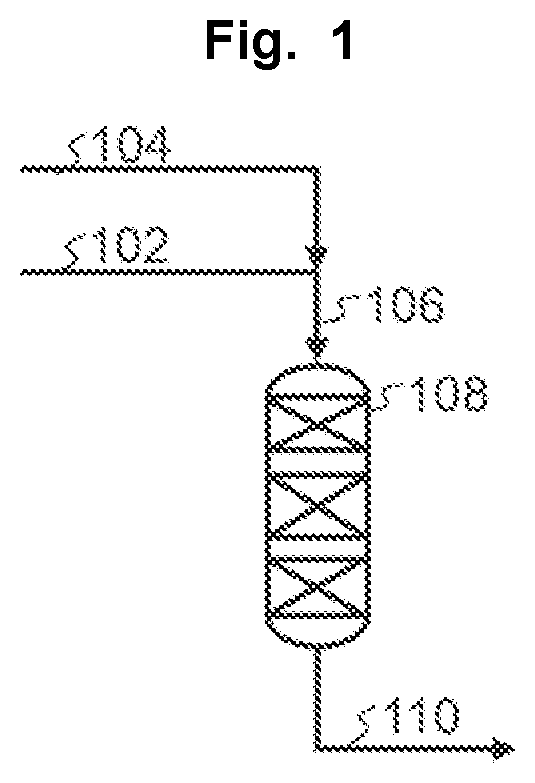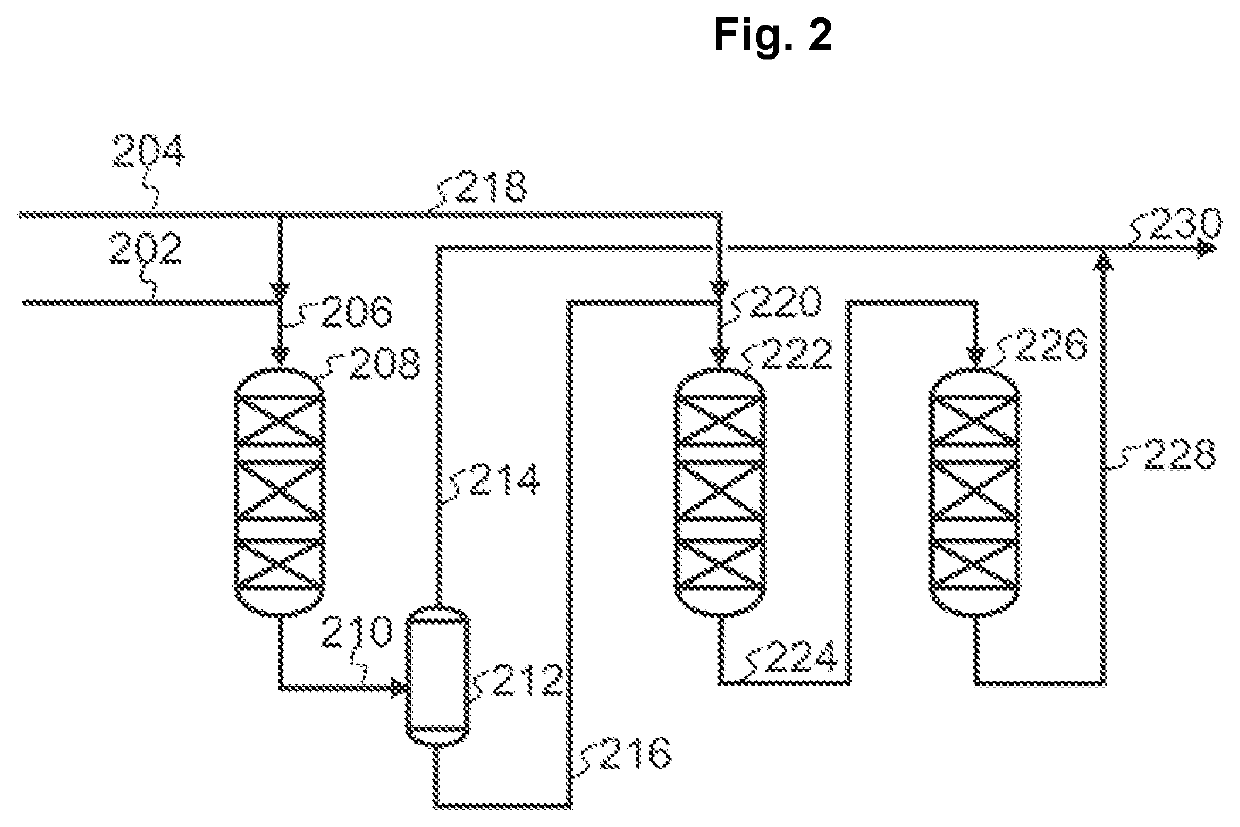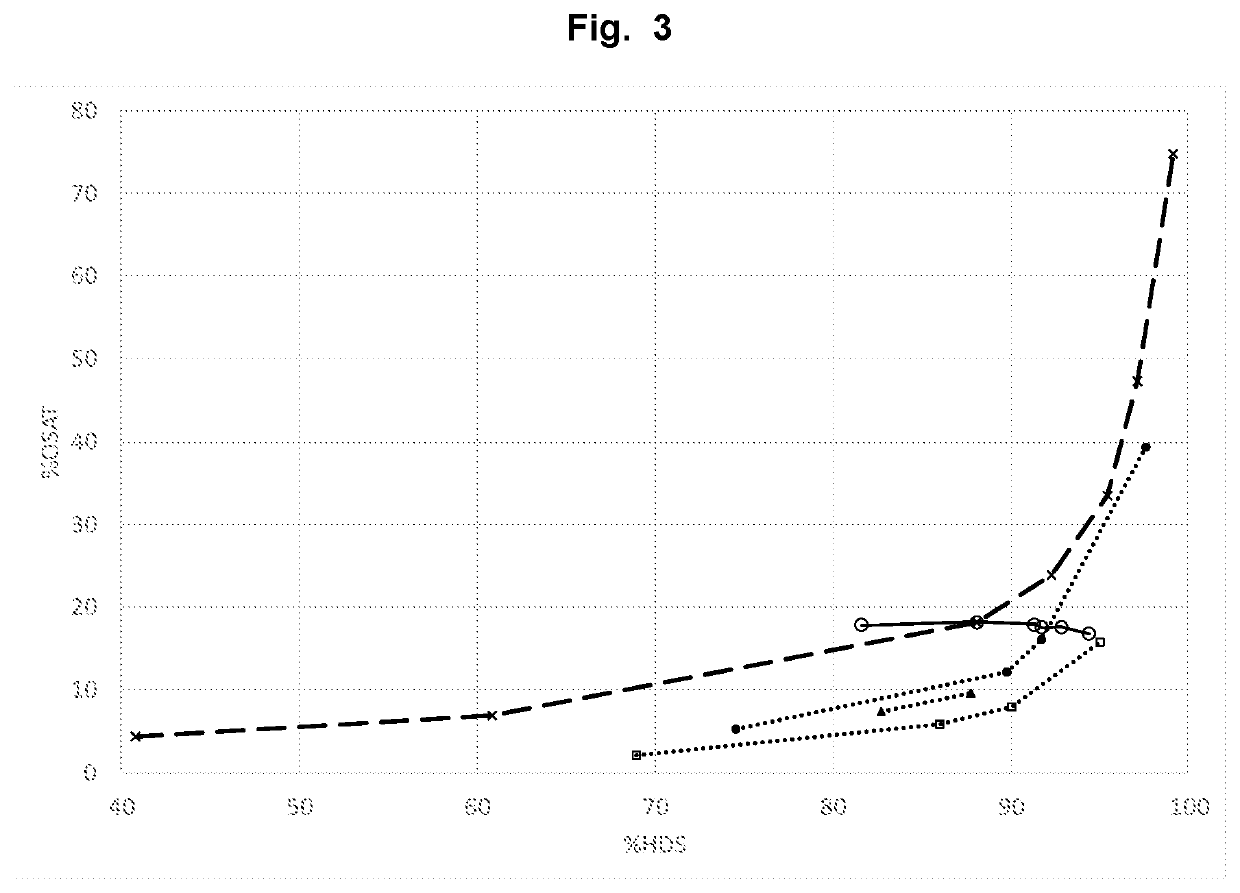Process for desulfurization of hydrocarbons
- Summary
- Abstract
- Description
- Claims
- Application Information
AI Technical Summary
Benefits of technology
Problems solved by technology
Method used
Image
Examples
example 1
[0105]In Example 1 Feedstock 1 was treated under a GOR level of 500 Nm3 / m3, with 100% hydrogen treat gas. The severity of hydrodesulfurization was controlled by varying the temperature from 200 to 280° C. and the gas to feedstock ratio (GOR) of 250 to 1400 Nm3 / m3, with an inlet pressure of 20 barg. The liquid hourly space velocity (LHSV) was 2.5 1 / hr (v / v / hr). Experimental results are shown in Table 3, and in FIGS. 3 and 4 using the symbol ‘x’.
example 2
[0106]In Example 2 Feedstock 2 was treated under a GOR level of 1200 Nm3 / m3 with 100% hydrogen treat gas with an inlet pressure of 20 barg. The severity of hydrodesulfurization was controlled by varying the temperature from 220 to 265° C. The liquid hourly space velocity (LHSV) was 2.5 1 / hr (v / v / hr). Experimental results are shown in Table 4, and in FIGS. 3 and 4 using the closed circle symbol ‘•’.
example 3
[0107]In Example 3 Feedstock 2 was treated under a GOR level of 1200 Nm3 / m3 with a treat gas mixture of H2 and CH4 with a total inlet pressure of 20 barg. The severity of hydrodesulfurization was controlled by varying the H2 concentration in the treat gas from 42% to 75%. The temperature was 235° C. The liquid hourly space velocity (LHSV) was 2.5 1 / hr (v / v / hr). Experimental results are shown in Table 5, and in FIGS. 3 and 4 using the closed triangle symbol ‘▴’.
PUM
| Property | Measurement | Unit |
|---|---|---|
| Temperature | aaaaa | aaaaa |
| Temperature | aaaaa | aaaaa |
| Temperature | aaaaa | aaaaa |
Abstract
Description
Claims
Application Information
 Login to View More
Login to View More - R&D
- Intellectual Property
- Life Sciences
- Materials
- Tech Scout
- Unparalleled Data Quality
- Higher Quality Content
- 60% Fewer Hallucinations
Browse by: Latest US Patents, China's latest patents, Technical Efficacy Thesaurus, Application Domain, Technology Topic, Popular Technical Reports.
© 2025 PatSnap. All rights reserved.Legal|Privacy policy|Modern Slavery Act Transparency Statement|Sitemap|About US| Contact US: help@patsnap.com



